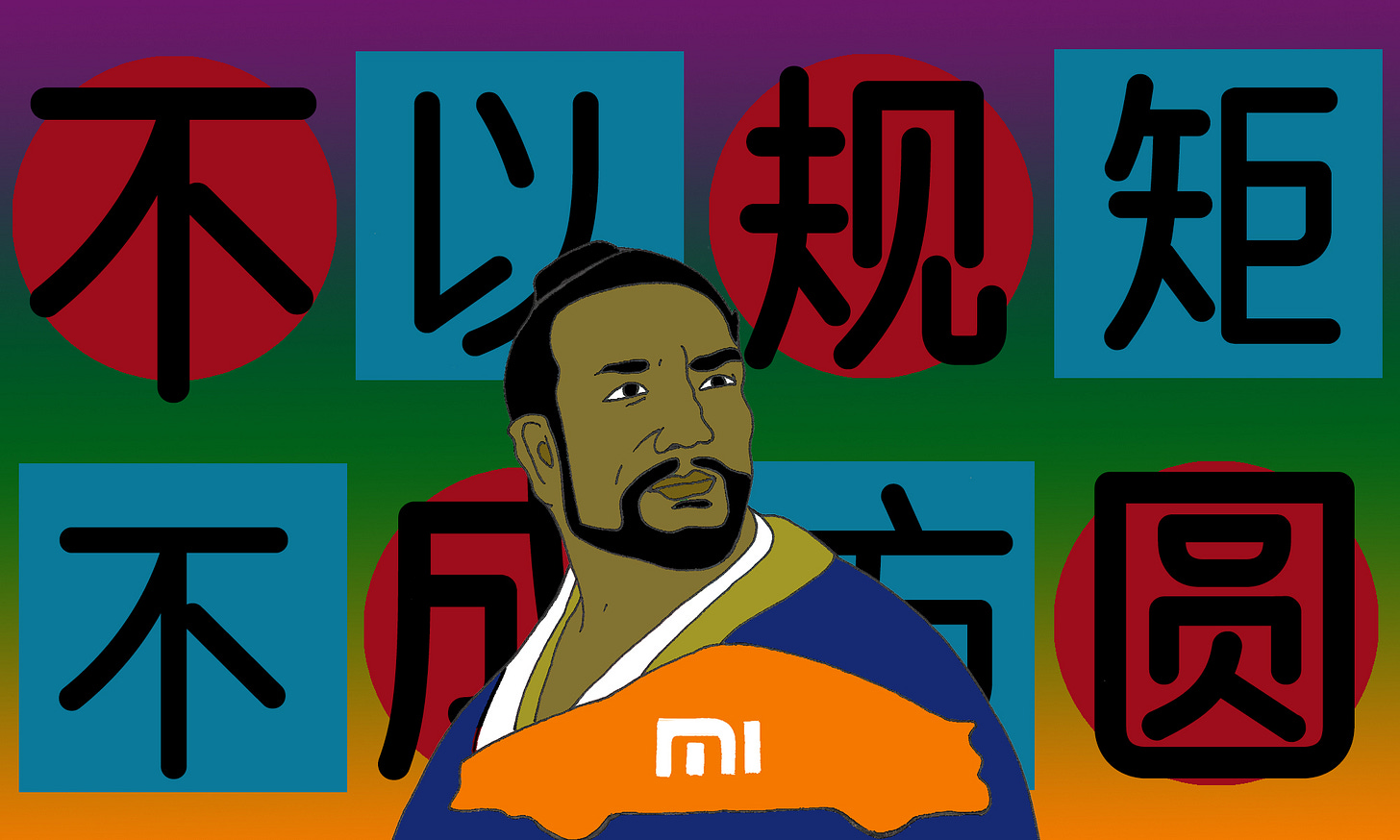Welcome to RealTime Mandarin, a free weekly newsletter that helps you improve your Mandarin in 10 minutes a week.
Subscribe today to get your fluency back, stay informed about China, and communicate with confidence in Chinese — all through immersion in real news.
On April 23, Auto Shanghai—the world’s largest auto show—kicked off in Shanghai with over 1,000 companies in attendance.
This was the biggest Auto Shanghai show yet (its full name is a bit of a mouthful: Shanghai International Automobile Industry Exhibition 上海国际汽车工业展览会).
There were two things missing from this year’s event:
There were notable absences of established Chinese brands, including Neta Auto (哪吒) and Xiaomi (小米)
And terms like "smart driving" (智驾) had been removed from most presentations.
This shift in language is what we’re exploring today.
At past events, intelligent driving technology was always the star attraction at the show, with buzzwords like "urban Navigate on Autopilot" (城区NOA), "LiDAR" (激光雷达), and “zero-intervention” (零接管) populating presentations of automakers competing for eyeballs and customers in China’s ultra-competitive, “involuted” (内卷式) EV market.
But, just a week before Auto Shanghai, on April 16, China’s Ministry of Industry and Information Technology (MIIT) held a meeting which changed everything.
Officials laid out new requirements for car safety testing, and warned against exaggerated marketing claims about automated driving functions—which up until now have blurred the lines between “assisted driving” (辅助驾驶) and autonomous or "smart" driving (高阶智驾).
Driverless technology is classified in five levels: from “L1”, which is basic assisted driving, to “L5”, which is full automation with no driver needed.
In China, although their marketing materials may suggest otherwise, most “smart” vehicles are currently at L2, with partial automation like lane-keeping and adaptive cruise control which still require full driver attention.
“L3”—where the car can handle driving under certain conditions without driver input—is being piloted by companies like XPeng (小鹏), and Huawei (华为). The more advanced, and higher levels of L4 and L5 automation are still experimental, limited to robotaxi trials in some cities, such as Baidu’s “silly carrot” (苕萝卜) robotaxi trial in Wuhan.
A new front-runner in driverless technology is telecoms giant, Huawei, which unveiled its new intelligent driving system at Auto Shanghai—marking a major step towards L3 autonomous driving.
Expected to be rolled out this year, Huawei's new system represents one of the most advanced L3 solutions in China. The company says it’s "all in" on automotive: also launching its own new "smart car” brand, Shangjie (尚界), at Auto Shanghai, a joint venture with SAIC (上汽), China’s largest state-owned carmaker.
More importantly for readers of RealTime Mandarin, the new head of Huawei’s driverless car business, Richard Yu (余承东), who was at the show, is a favourite of this newsletter, and the inventor of one of our top phrases of 2023, "way ahead" (遥遥领先), a marketing slogan which went viral for the wrong reasons.
Related
Despite rapid advances by Huawei and other companies, fully autonomous driving at Level 4 or 5 is still years away.
The recent push by regulators against misleading marketing language about the levels of automation has brought this into focus.
It follows a fatal crash on March 29 involving a Xiaomi SU7 electric car, in which three university students died after the vehicle, reportedly on autopilot, hit a concrete barrier on the highway at 97km/h.
The tragedy sparked public outcry and renewed scrutiny of China’s rapidly expanding EV sector, still without clear standards or regulations for autonomous driving.
This is why, following the MIIT April announcement, carmakers were scrambling to update their promotional materials in the week before Auto Shanghai—removing terms like “smart driving” (智驾), “advanced smart driving” (高阶智驾), and “autonomous driving” (自动驾驶) from their marketing materials.
One observer sums up the sentiment among automakers:
This sudden halt is undoubtedly a painful jolt for carmakers, but it's actually a good thing — the industry can only advance with clear rules and regulations.
这次的急停,对于车企无疑是一场阵痛,但这其实是一件好事——有了“规矩”,才能成更广阔的“方圆”。
Even Huawei’s Richard Yu, known for exaggerating at product launches, toned things down and didn’t mention “intelligent driving”, or how Huawei is “way ahead” at all during the brand’s Shangjie launch.
So, can China’s automakers put the brakes on, and adapt to the new rules?
That’s what we’re exploring this week!
🎧RTM Podcast Preview
This week on the RTM Advanced podcast, we’re diving into the language of “over-egging the pudding” as we say in English, and the different ways to use words like “exaggerate” (浮夸), “spiel” (话术), and “Great Leap Forward-like (大跃进式).
We’ll also give you a very nerdy breakdown of the real meaning of the Chinese characters for “rules” (规矩), which is SOOooo interesting!
We’ll break down the phrases and show you how native speakers choose the right words, so you can too!
Favourite Five
1. 智驾 zhì jià
smart driving, intelligent driving
“智驾”狂飙过热之后,正经历一次必要的冷却 - After a period of intense hype around smart driving, the industry is entering a more sobering phase, which is absolutely necessary. [3]
2. 亡羊补牢 wáng yáng bǔ láo
to mend the fold after losing sheep, to take action after a loss
两种流程之间的最大区别就是实现了从“亡羊补牢”模式到“未雨绸缪”模式的跨越 - The biggest difference between the two processes is the shift from a reactive approach to a proactive one. [3]
3. 闭口不谈 bì kǒu bù tán
to keep silent, to avoid talking about
高阶智驾闭口不谈,距离车展还有6天时间,车企们被迫改换思路 - With advanced smart driving off the table and only six days left before the auto show, car companies were being forced to change their strategies. [3]
4. 不以规矩,不能成方圆 bù yǐ guī ju, bù néng chéng fāng yuán
nothing can be accomplished without rules or regulations
有了“规矩”,才能成更广阔的“方圆” - The auto industry can only advance with clear rules and regulations. [3]
More: we explore this old phrase in tomorrow’s Sinica Phrase of the Week!
5. 一石激起千层浪 yì shí jī qǐ qiān céng làng
one stone stirs up a thousand waves, a single action causes a big reaction
一石激起千层浪,在公告后直至上海车展的短短几天内,各大车企公关马不停蹄修改方案 - Like a stone stirring up a thousand waves, in the few days between the announcement and the Shanghai Auto Show, major car brands scrambled to revise their marketing plans. [3]
Related:
蝴蝶效应 hú dié xiào yìng – butterfly effect
💡 Ready to get inspired to bridge the gap to real-world fluency? 💡
Every RTM+ post is packed with tools to inspire and help you get fluent.
It's designed to fit your busy life, your learning style, and your level—whether you’re “intermediate”, “advanced but rusty”, or “fluent with gaps”.
So, ready to get inspired and finally get back to real-world fluency?
Let’s jump in👇
















